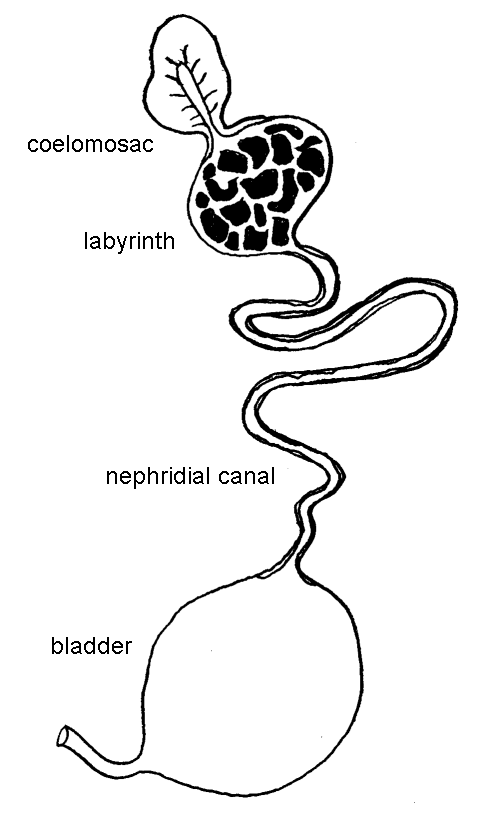Circulatory and Excretory Systems
Unlike vertebrates, the body cavity (coelom) of arthropods is filled with the respiratory medium or ‘blood’ (Ruppert et al. 2004). This is an open circulatory system known as a haemocoel, the respiratory medium then being haemolymph, which provides oxygen (and removes carbon dioxide) and nutrients (Ruppert et al. 2004). Though an open system, decapod crustaceans still possess complex networks of vessels and capillary beds and have a cardiac output comparable to similar sized vertebrates (McMahon and Burnett 1990). The heart is a single ventricle or chamber, suspended within a pericardial cavity (McMahon and Burnett 1990). Despite being single chambered, the heart possesses seven output arteries, and appears capable of fine control of cardiac output and regulating flow between different organs and tissue beds (McMahon and Burnett 1990). The complex arterial system includes both anterior and posterior aortas, paired antennary and hepatic arteries and a sternal artery, each having valves to prevent backflow as it is released into the different regions of the haemocoel (McMahon and Burnett 1990). The haemolymph, while equivalent to our own blood in function also plays the role of the lymphatic system (McMahon and Burnett 1990). Haemolymph returns to the heart through a series of sinuses (McMahon and Burnett 1990).
 |
| Antennal gland of a hermit crab. The coelomosac filters haemolymph to produce the primary filtrate which is passed through the labyrinth and nephridial canal for water and nutrient reabsorption and then stored in the bladder. Illustration by Storm Martin 2012, adapted with modification from Ruppert et al. 2004 |
Because the coelomic (body) cavity of hermit crabs is filled with haemolymph, excretion of nitrogenous waste requires only a specialised pore allowing passage from the coelom across the body wall and cuticle (Ruppert et al. 2004). A structure that connects the coelom with the environment in this way is termed a coelomoduct (Saxena 2005). In crustaceans, coelomoducts specialised for the removal of nitrogenous waste are classed as antennal glands or maxillary glands, hermit crabs possessing the former (Saxena 2005). These are more complex structures than the protonephridia and metanephridia of many other marine invertebrates (Ruppert et al. 2004) and converge on a similar morphological structure to the nephridia of vertebrates (Peterson and Loizzi 1974). The antennal glands are paired and situated at the base of the antennae (Peterson and Loizzi 1974). Haemolymph of the coelom is filtered into the collecting coelomosac to produce the primary filtrate/urine (Peterson and Loizzi 1974). The urine then continues through a structure known as the labyrinth, a site of nutrient and electrolyte reabsorption (Peterson and Loizzi 1974). Fluid continues to be reabsorbed as it passes through the nephridial canal and the urine is finally stored in a bladder prior to excretion (Peterson and Loizzi 1974). |